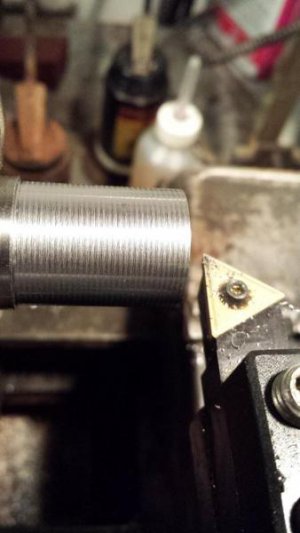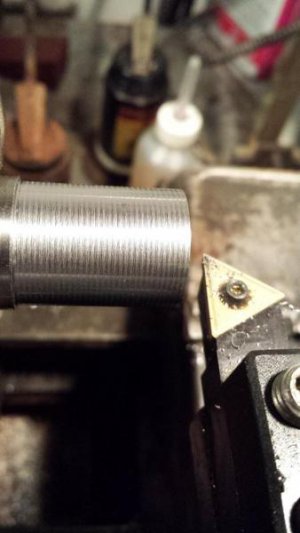- Joined
- Apr 12, 2013
- Messages
- 562
While I had the indicator in the toolpost checking my ram, I indicated all sorts of spots on the lathe to see how worn it is. I particular I was seeing about .003-.004" of wobble in a brand new MT3 dead center in the spindle...with similar movement with hand applied firm pressure.
I did a little research on the spindle and learned there is an adjustment for the bearing preload. I don't have an original manual, so I did some research and found info suggesting: tighten and torque an additional 1/16 turn...or the same rotation as 2 teeth on the spindle gear.
I didn't find any info on what the initial tightening should be.
After a 20 minute warm up running on medium speed with the idler locked in: I set it firm, to the point the hand pressure would only cause about .001" deflection, and then added the suggested 1/16th turn. This was about 1/8th turn of the nut from its previous position.
Unloaded spindle indicated movement is less than .001" and firm hand pressure causes about .001" movement.
Running for 10 minutes causes no noticeable warmth in the bearings or inside the spindle.
Should I leave well enough alone or can that last .001" runout be adjusted out?
I did a little research on the spindle and learned there is an adjustment for the bearing preload. I don't have an original manual, so I did some research and found info suggesting: tighten and torque an additional 1/16 turn...or the same rotation as 2 teeth on the spindle gear.
I didn't find any info on what the initial tightening should be.
After a 20 minute warm up running on medium speed with the idler locked in: I set it firm, to the point the hand pressure would only cause about .001" deflection, and then added the suggested 1/16th turn. This was about 1/8th turn of the nut from its previous position.
Unloaded spindle indicated movement is less than .001" and firm hand pressure causes about .001" movement.
Running for 10 minutes causes no noticeable warmth in the bearings or inside the spindle.
Should I leave well enough alone or can that last .001" runout be adjusted out?



